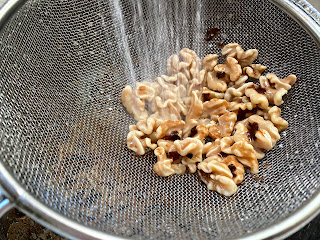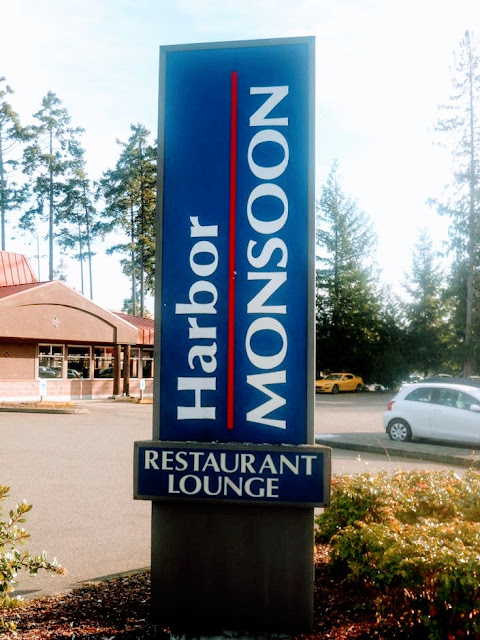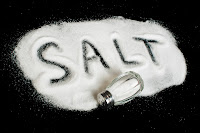Doshers Supple Asian Sauce & Honey Walnuts
I first tried this sauce or a version at this restaurant in the early '90s. The food was absolutely amazing, and I am saying this without exaggeration. In fact, over the years, I got to know the owners, and the owners were just as awesome as their sauce. Harbor Monsoon opened its doors in the Harbor in 1993 and closed in Oct 2011. This was by far the best Chinese food in the Harbor, and to this date, no one has ever come close to this level of American Chinese Cuisine.
 Do I have their recipe? Nope, they never gave it up!!! I was told the owner came in early and would make a batch for the day to keep it secret from the chefs and servers. I detected most ingredients over the years (with queries), but that's where it stopped. I was never able to obtain the recipe. Before the owner retired, he appeared on KCTS and demonstrated how to make the sauce (a famous sauce). It was also authored in the KCTS cookbook after it was televised, of which I have a copy. I have no doubt the one in the book is slightly different from the original. Here is my version, which is way better, IMO. And in my version, I give variants so it can be used with various dishes.
Do I have their recipe? Nope, they never gave it up!!! I was told the owner came in early and would make a batch for the day to keep it secret from the chefs and servers. I detected most ingredients over the years (with queries), but that's where it stopped. I was never able to obtain the recipe. Before the owner retired, he appeared on KCTS and demonstrated how to make the sauce (a famous sauce). It was also authored in the KCTS cookbook after it was televised, of which I have a copy. I have no doubt the one in the book is slightly different from the original. Here is my version, which is way better, IMO. And in my version, I give variants so it can be used with various dishes.
Note: The recipe needs to be corrected. It should read 3 oz of both Mayo and Kewpie and 6 oz each.
 The Chinese method called velveting is the method I am most fond of when making dishes like these. The technique is super easy, too. Take a couple of egg whites and mix until they are frothy; add some cornstarch and other seasonings if you want. I only added salt, but other dishes may need white wine, sake, sesame seed oil, soy, etc. Just use your imagination. After the egg whites are frothy, add enough cornstarch to make a simple batter. The chicken, when combined with the mixture, should be sticky. I add a little Dojon to the egg whites for my mustard Chicken.
The Chinese method called velveting is the method I am most fond of when making dishes like these. The technique is super easy, too. Take a couple of egg whites and mix until they are frothy; add some cornstarch and other seasonings if you want. I only added salt, but other dishes may need white wine, sake, sesame seed oil, soy, etc. Just use your imagination. After the egg whites are frothy, add enough cornstarch to make a simple batter. The chicken, when combined with the mixture, should be sticky. I add a little Dojon to the egg whites for my mustard Chicken. I used Chicken Breasts for this recipe because I could not find any chicken thighs on the shelves due to a Bird Flu and supply issue.
I used Chicken Breasts for this recipe because I could not find any chicken thighs on the shelves due to a Bird Flu and supply issue. This recipe works well with breasts or thighs. The picture to the left does not show it, but I added more cornstarch to make the chicken slightly tacky and sticky. Deep fry chicken at 350f-370f until adequately cooked. You could also Sous-Vide the chicken, but remember to fry it at a higher temperature just to brown it a bit. Note: Add chicken one piece at a time, and do not over-crow the pot. The chicken will stick together if you don't.
This is the mustardy sauce I made. I used 2 tbsp of Dijon mustard, which hit the mark for me. Make sure the sauce is warm before applying it to the chicken. No one wants to add cold sauce to hot chicken. I microwaved the sauce a few times while stirring at 20-second intervals until an appropriate temperature was achieved.

After deep-frying, toss into a bowl, fold in sauce, and serve.
Note: If you're making a lot of chicken, this is my suggestion: Make your chicken in batches and set it aside. Put all the chicken you set aside back into the oil, dump it back into the oil, and fry for about 10-15 seconds just to heat through. Toss in a bowl and fold in sauce.
 Let's make some Honey Walnuts... I remember talking with Harbor Monsoon's owner and asking about his process. He told me he used Lye water to remove walnut skins. Huh? He never gave out measurements. There's not much in the KCTS book, either. In the book, he uses 2 tsp of Lye Water and 1 tsp of Baking Soda in a bag of Walnuts. I love being specific and science, so I did lots of research on this topic. Lye water is very different than food-grade Lye, which comes in powder form. Note: The ratio of Lye to Baking soda is 1 to 1/2). The Amount you use will be determined based on the water volume. I use about an eleven-quart pot to boil walnuts. The Lye and Baking Soda help soften and give some sponginess to the walnut. It also helps with skin removal.
Let's make some Honey Walnuts... I remember talking with Harbor Monsoon's owner and asking about his process. He told me he used Lye water to remove walnut skins. Huh? He never gave out measurements. There's not much in the KCTS book, either. In the book, he uses 2 tsp of Lye Water and 1 tsp of Baking Soda in a bag of Walnuts. I love being specific and science, so I did lots of research on this topic. Lye water is very different than food-grade Lye, which comes in powder form. Note: The ratio of Lye to Baking soda is 1 to 1/2). The Amount you use will be determined based on the water volume. I use about an eleven-quart pot to boil walnuts. The Lye and Baking Soda help soften and give some sponginess to the walnut. It also helps with skin removal. In the '80s, when I worked at a bagel shop, we used to boil our bagels in a water lye bath. The addition of Lye added to the chewiness, crust, and soft interior. The Lye we used was not Lye Water. It was the real stuff added at about 0.15% of the weight of the water. So if we had 100 Liters of water, which is 100,000 ML, you would multiply that by
0.15% = 150 grams of Lye needed.
I could write a thesis on the history and the uses of Lye, but that would be crazy for this post. Here are the ratios that worked for me. I used 4 quarts of water and 1 tsp. Of Lye Water and 1/2 tsp of Baking soda. Bring water to a boil and add as many walnuts as the pot can handle. In salted boiling water (not a raging boil), cook for about 25-30 minutes. NOTE: In Asian cooking, Lye water is used with noodles, proteins, and several other dishes to help texture and color. I don't eat prawns, but it is often used to make them firm and crispy.
 Rinse under cold running water until thin skins are gone. This took a long time. I placed the walnuts into a colander and then used a sieve to rinse and manhandle. Yes, manhandle!!! I had to rinse many times and used a small skewer to assist in removing skins that were sunken in tight.
Rinse under cold running water until thin skins are gone. This took a long time. I placed the walnuts into a colander and then used a sieve to rinse and manhandle. Yes, manhandle!!! I had to rinse many times and used a small skewer to assist in removing skins that were sunken in tight. When you are satisfied or have removed an adequate amount of skin, place the walnuts on paper napkins to drain and dry. Place additional towels on top of the nuts, roll them up, and shake off excess water.
 Make a simple syrup using water, sugar, and honey. Based on the number of walnuts I had, I used 2/3 cup of water, 2/3 cup of sugar, and 2 tbsp of Honey (or to taste). Bring water to a boil and stir in sugar and honey. Cool slightly and mix into walnuts, folding over and over occasionally for about 15 minutes.
Make a simple syrup using water, sugar, and honey. Based on the number of walnuts I had, I used 2/3 cup of water, 2/3 cup of sugar, and 2 tbsp of Honey (or to taste). Bring water to a boil and stir in sugar and honey. Cool slightly and mix into walnuts, folding over and over occasionally for about 15 minutes.Spread out on parchment and bake at 350 degrees F or fry until golden. You can also deep fry them.
Cool them very well or they will stick together.
MORE PICS.........I Finally made them with chicken thighs.
You are looking at 3 1/2 lbs of Chicken Thighs.




















Comments
Post a Comment